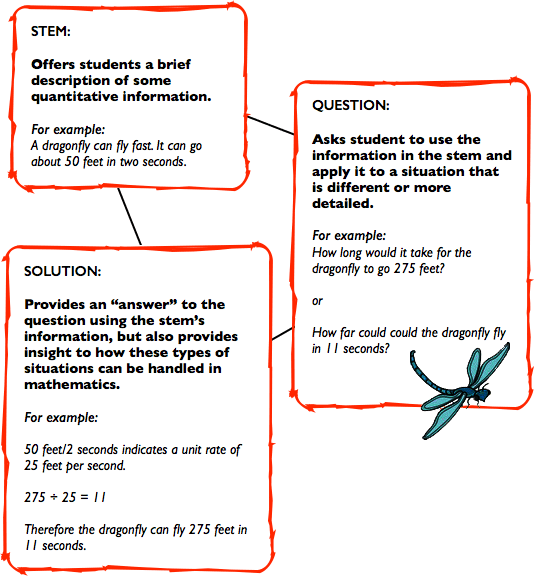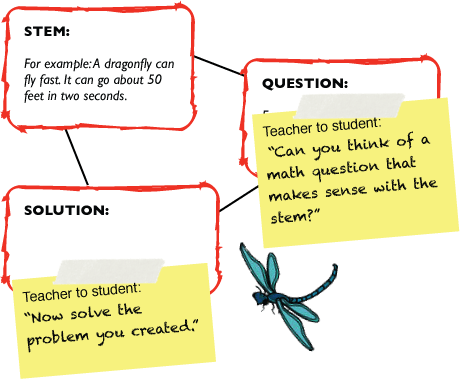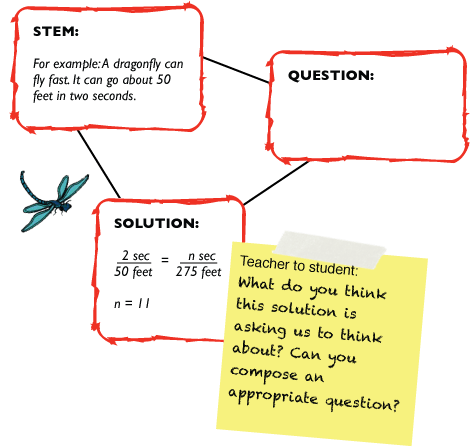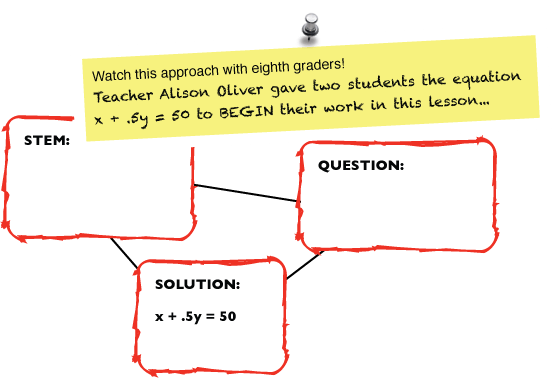Stem/Question/Solution Triangles
Helping Students Move Beyond "Answer-Getting"
There is nothing "wrong" with focusing on the solution of a math problem. But students can be observed using truly haphazard approaches to getting a solution. One teacher referred to this as "mashing numbers." Typically, students try to quickly find the numbers embedded in the word problem and then run through various familiar operations to come up with an answer, regardless of whether that answer makes sense. Rarely do students take time to consider the question being asked of them, and the relationship among the quantities in the problem in order to thoughtfully decide on an approach to solution.
Looking at word problems as three-part entities enables teachers to vary the part or parts that students need to fill in or solve. Students might be given a stem only, and asked what questions can be asked with the information provided. Or they might be given a solution and asked to imagine a situation and question for which it would be an answer. Students must then think about an equation in terms of the relationships it represents, and apply that understanding to a real life (or in some cases imagined) situation.
For instance:
Using this Model with Students
Below are ideas of how teachers may include this model when discussing concepts, such as proportional relationships.
View Eighth Graders with the Model
SERP has been supported to conduct this work by the S.D. Bechtel, Jr. Foundation.
This work is licensed under a Creative Commons Attribution-NonCommercial-ShareAlike 4.0 International License.




